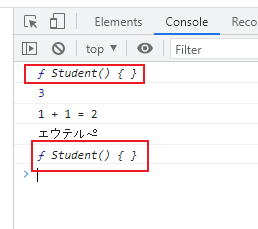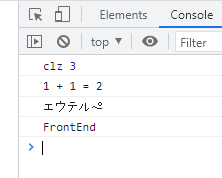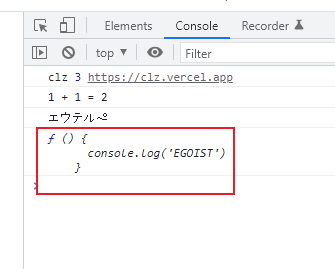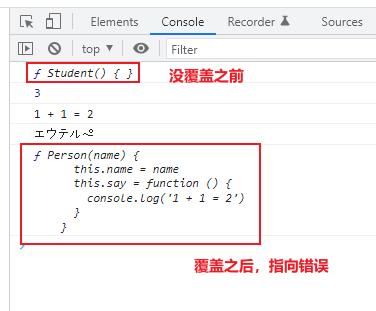JavaScript 实现继承的六种方式
父类
1
2
3
4
5
6
7
8
9
10
| function Person(name) {
this.name = name;
this.say = function () {
console.log("1 + 1 = 2");
};
}
Person.prototype.listen = function () {
console.log("エウテルペ");
};
|
1. 原型链继承
将父类的实例作为子类的原型
1
2
3
4
5
6
7
8
9
10
11
12
13
14
15
16
17
18
19
20
21
22
23
| function Person(name) {
this.name = name;
this.say = function () {
console.log("1 + 1 = 2");
};
}
Person.prototype.listen = function () {
console.log("エウテルペ");
};
function Student() {}
Student.prototype = new Person();
const stu = new Student();
stu.grade = 3;
console.log(stu.grade);
stu.say();
stu.listen();
|
优点:
简单易实现
父类新增原型方法/原型属性,子类都能访问
实例是子类的实例也是父类的实例
1
2
| stu instanceof Student;
stu instanceof Person;
|
缺点:
- 为子类新增属性和方法,不能在构造函数中
- 无法实现多继承
- 创建子类实例时,不能向父类构造函数传参数
- 所有新实例都会共享父类实例的属性。(原型上的属性是共享的,一个实例修改了原型属性,另一个实例的原型属性也会被修改!)
存在的问题:
解决问题
1
| Student.prototype.constructor = Student;
|

2. 借用构造函数继承
在一个类中执行另一个类的构造函数,通过 call函数设置 this的指向,这样就可以得到另一个类的所有属性
1
2
3
4
5
6
7
8
9
10
11
12
13
14
15
16
| function WebsiteMaster(site) {
this.site = site;
}
function Student(name, grade, site) {
Person.call(this, name);
WebsiteMaster.call(this, site);
this.grade = grade;
}
const stu = new Student("clz", 3, "https://clz.vercel.app");
console.log(stu.name, stu.grade, stu.site);
stu.say();
stu.listen();
|
优点:
- 创建子类实例时,可以向父类传递参数
- 可以实现多继承(call 多个对象)
- 不需要修复构造函数指向
缺点:
方法在构造函数中定义,无法复用
只能继承父类的实例属性,不能继承原型属性、方法
实例并不是父类的实例,而只是子类的实例
1
2
| stu instanceof Student;
stu instanceof Person;
|
继承继着不再是人了(笑)
3. 原型式继承
为父类实例添加属性、方法,作为子类实例。
道格拉斯·克罗克福德在一篇文章中介绍了一种实现继承的方法,这种方法并没有使用严格意义上的构造函数。它的想法是借助原型可以基于已有的对象创建新对象,同时还不必因此创建自定义类型。为了达到这个目的,他给出了如下函数。
1
2
3
4
5
| function object(o) {
function F() {}
F.prototype = o;
return new F();
}
|
1
2
3
4
5
6
7
8
9
10
11
12
13
14
15
16
17
18
19
20
21
| function object(o) {
function F() {}
F.prototype = o;
return new F();
}
const person = new Person("clz");
const stu = object(person);
stu.grade = 3;
stu.study = function () {
console.log("FrontEnd");
};
console.log(stu.name, stu.grade);
stu.say();
stu.listen();
stu.study();
|

优点:
缺点:
4. 寄生式继承
为父类实例添加属性、方法,作为子类实例。(原理和原型式继承一样)
1
2
3
4
5
6
7
8
9
10
11
12
13
14
15
16
17
18
19
20
21
22
23
24
25
| function object(o) {
function F() {}
F.prototype = o;
return new F();
}
function Student(name, grade) {
const person = object(new Person(name));
person.grade = grade;
person.study = function () {
console.log("FrontEnd");
};
return person;
}
const stu = new Student("clz", 3);
console.log(stu.name, stu.grade);
stu.say();
stu.listen();
stu.study();
|
优点:
- 有了子类的雏形,但是换汤不换药,原理和原型式继承一样
缺点:
5. 组合继承
原型链继承+借用构造函数继承
1
2
3
4
5
6
7
8
9
10
11
12
13
14
15
16
17
18
19
20
21
| function WebsiteMaster(site) {
this.site = site;
}
function Student(name, grade, site) {
Person.call(this, name);
WebsiteMaster.call(this, site);
this.grade = grade;
}
Student.prototype = new Person();
Student.prototype.constructor = Student;
const stu = new Student("clz", 3, "https://clz.vercel.app");
console.log(stu.name, stu.grade, stu.site);
stu.say();
stu.listen();
console.log(stu.constructor);
|
优点:
- 可以继承实例属性、方法,也可以继承原型属性、方法
- 可传参、可复用
- 实例既是子类的实例,也是父类的实例
缺点:
- 调用了两次父类构造函数,耗内存
- 需要修复构造函数指向
6. 寄生组合式继承
通过 Object.create()来代替给子类原型赋值的过程,解决了两次调用父类构造函数的问题
1
2
3
4
5
6
7
8
9
10
11
12
13
14
15
16
17
18
19
| function WebsiteMaster(site) {
this.site = site;
}
function Student(name, grade, site) {
Person.call(this, name);
WebsiteMaster.call(this, site);
this.grade = grade;
}
Student.prototype = Object.create(Person.prototype);
Student.prototype.constructor = Student;
const stu = new Student("clz", 3, "https://clz.vercel.app");
console.log(stu.name, stu.grade, stu.site);
stu.say();
stu.listen();
|
有人可能会提出:为什么不可以直接把父类原型赋值给子类原型来实现呢?
这是因为直接赋值的话,那就是引用关系。下面就来看看
1
2
3
4
5
6
7
8
9
10
11
12
13
14
15
16
17
18
19
20
21
22
23
24
25
| function WebsiteMaster(site) {
this.site = site;
}
function Student(name, grade, site) {
Person.call(this, name);
WebsiteMaster.call(this, site);
this.grade = grade;
}
Student.prototype = Person.prototype;
Student.prototype.constructor = Student;
const stu = new Student("clz", 3, "https://clz.vercel.app");
console.log(stu.name, stu.grade, stu.site);
stu.say();
stu.listen();
Student.prototype.listen = function () {
console.log("EGOIST");
};
console.log(Person.prototype.listen);
|

可以看到,修改 Student原型上的方法时, Person的原型上的也会跟着变化。
**Object.create()**方法创建一个新对象,使用现有的对象来提供新创建的对象的__proto__。
所以,此时修改 Student原型上的方法时, Person的原型上的不会跟着变化。
es6 之前没有 Object.create()方法,可以自己实现(实际就是原型式继承的关键函数)
关键:
- 接受一个对象 obj
- 返回一个新对象 newObj
- 让
newObj.__proto__ === obj
1
2
3
4
5
| function object(obj) {
function F() {}
F.prototype = obj;
return new F();
}
|
参考链接:







